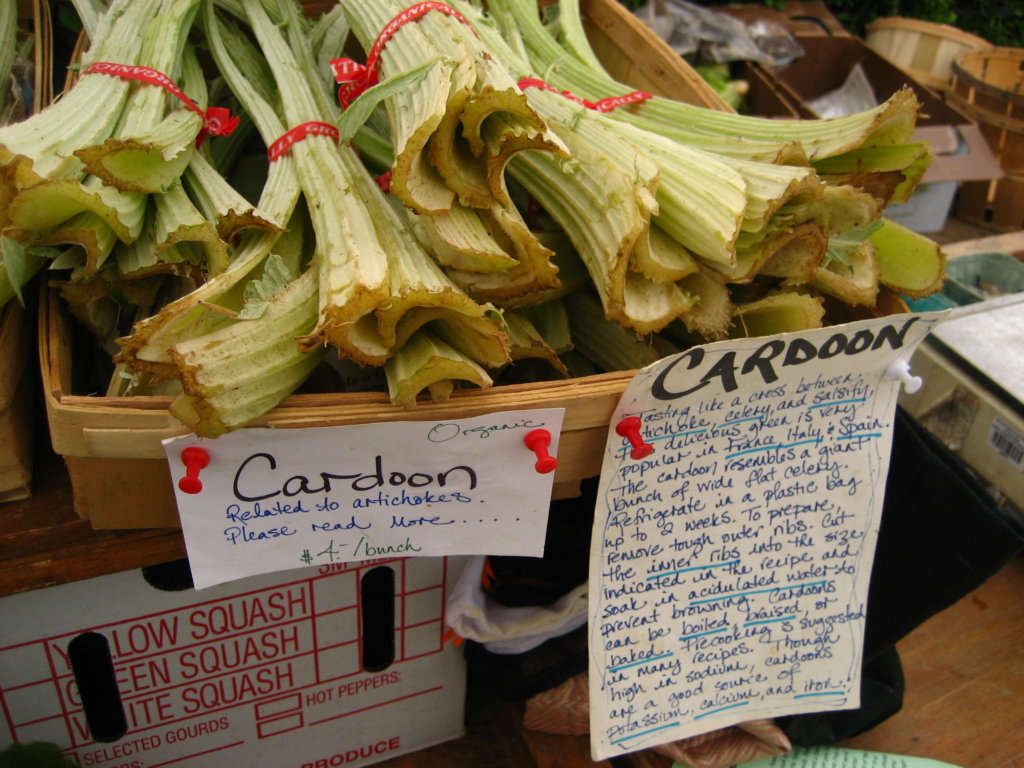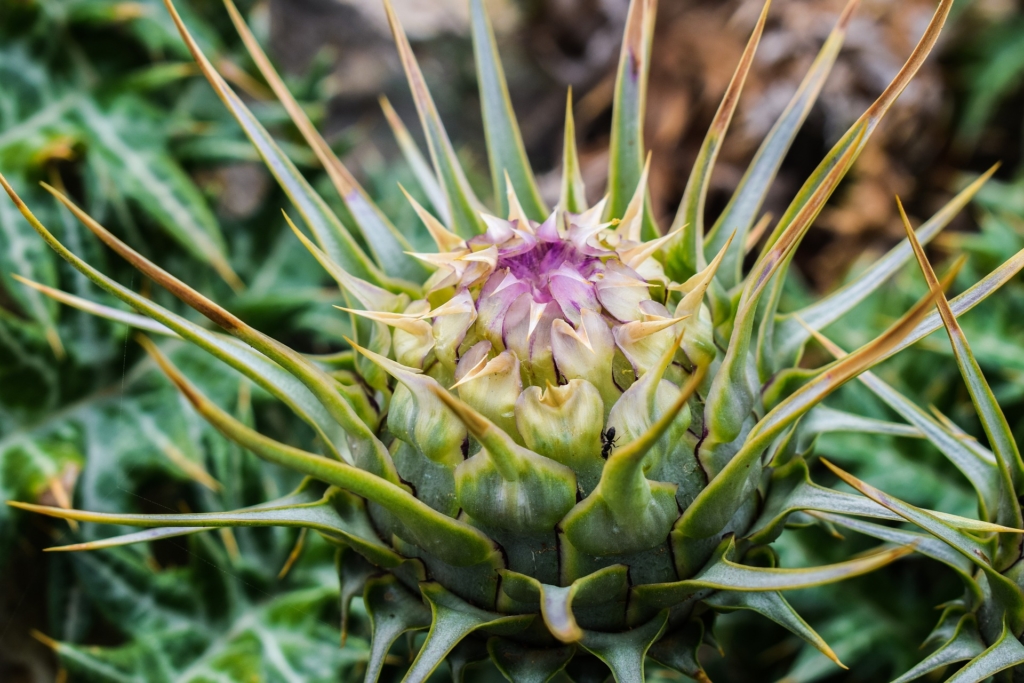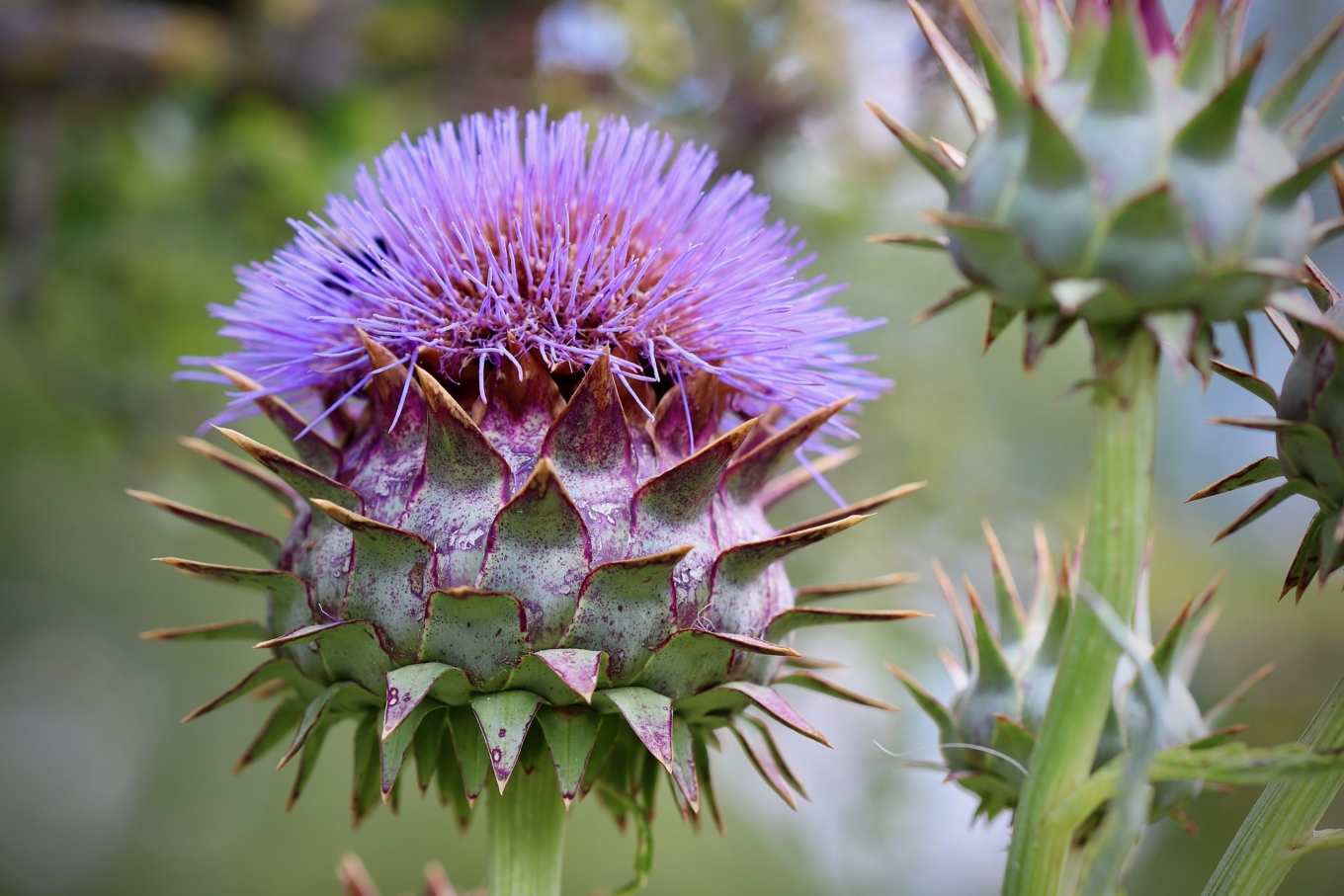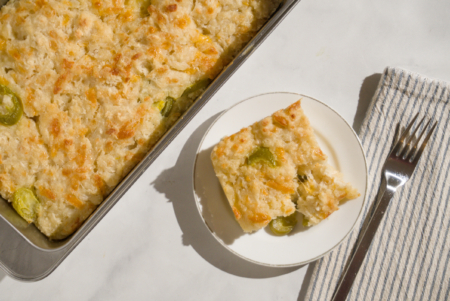Cardoons: a giant thistle covered in thorns. Labeled a pest species by Charles Darwin. Unusable without a labor-intensive prep process. So, why would you bother, and where would you start? Read on to find out.
What are Cardoons?
The cardoon is a thistle in the sunflower family, the same species as the artichoke, but whereas we usually eat the flower bud of the artichoke, cardoon stems are usually the edible part. Many liken cardoon’s appearance to a large bunch of celery with a silvery hue.
Flavor
The flavor of a cardoon is very similar to artichoke with an additional bitterness that will fluctuate depending upon the plant’s maturity and growing conditions.
History
Popular in ancient and medieval Greece, Rome, and Persia, the cardoon appears in written records from as early as the 4th century BC. Common in colonial America until the late 1800s, it is now quite rare to find cardoons in the United States. Their use has declined but still exists in western Europe (particularly Italy, Spain, and Portugal) and North Africa (especially Morocco). Cardoons are an ingredient in cocido madrileño, one of Spain’s national dishes, and have long been an important part of the Christmas meal in Spain’s northern regions and at least one Italian region. Cardoon flowers are also used as vegetable rennet in some traditional Spanish and Portugese cheeses.
Preparation

Cardoons require a lengthy preparation process prior to use in a recipe. Their thistle-y spines can make preparation difficult, and wearing gloves or using a towel can protect your hands from painful pricks.
First they need to be cleaned of thorns and peeled of the silver-hued strings that run the length of each stalk. This process is easier if the stalks are fresh, so they are best used soon after buying, before they become floppy. Fully peeled, the stalk will look more green than silver. Much like artichokes, cardoons may brown as they are cut, and placing them into a bowl of water acidulated with lemon juice or vinegar can help. Finally, cardoons are usually boiled for up to an hour, which softens them and reduces bitterness. Here’s a more detailed prep guide.
How to Use It
After their initial parboil, cardoons can be steamed, braised, fried, or sautéed, and served on their own or within a dish. Considering their artichoke-like flavor, cardoons can tag in for artichoke hearts in some recipes (like this Moroccan Artichoke Salad). They pair well with lemon, cream (start with this creamy soup), some cheeses (cardoon gratin!), and meat. Their long history of use in the Mediterranean region has led to many recipes for risotto, pasta, and soup, like the cardoon and meatball soup that kicks off a typical Christmas meal in Italy’s Abruzzo region. In Spain, cardoons are commonly paired with jamón, clams, artichokes, or beans (swap them in for artichokes in this Spanish stew), or served in sauce, such as a traditional almond sauce. In North African cuisine, cardoons may be added to tagines, like this Moroccan Tagine With Cardoons from The Spruce. And everything is delicious when battered and fried, as in this recipe for Roman-Style Fried Cardoons.
Because of their height and large, purple-blue flowers that attract pollinators, cardoons are sometimes grown as ornamentals.
Nutrition

The cardoon is low in calories, high in fiber, and a good source of folate, magnesium, and manganese.
Where to Find It
Although not commonly sold in the US, cardoons can sometimes be found at Italian and specialty markets, usually during their growing season of December through May. They may be found under the name artichoke thistle.
The Verdict
So why put up with the thorns and prep time? Forager Chef says, “Because cooking them is a lost art, and an interesting process. Oh, and they taste like artichokes, but with a much higher yield.” Okay, sold.
Feature Image: Annette Meyer from Pixabay



